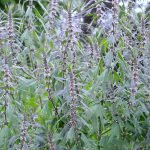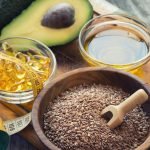The Microbiome & CVD: Ally or Adversary?
Ashley Burkman, ND
Lauren Young, ND
Cardiovascular disease (CVD) tops the charts as the deadliest disease in the United States, even above cancer.1 According to the Centers for Disease Control and Prevention, CVD is considered one of the most preventable chronic diseases.2 Prevention! Music to a naturopathic doctor’s ears! While increased body habitus, hypertension, hyperlipidemia, diabetes, and sleep apnea must be addressed accordingly to lower one’s risk of disease development, recent research has been inferring that the health of the gut microbiome plays an even deeper role.
The metabolism of choline and L-carnitine into the atherosclerotic-inducing compound, trimethylamine-N-oxide (TMAO), is dependent upon the health of an individual’s microbiome. Initially, it was thought that individuals who subscribed to a low-to-no animal-product diet, ie, vegetarians or vegans, were reducing risk of atherosclerosis by bypassing additional dietary cholesterol. Emerging research has shown that dietary choline and L-carnitine – found highest in animal meats – and their metabolic byproducts to be the culprits in the increased CVD risk. Individuals with diets high in choline and L-carnitine, or who are orally supplementing with L-carnitine, have the greatest amount of TMAO in their circulation.3
The Role of the Microbiome in TMAO Production
Not unique to CVD, imbalanced intestinal microbiota has been linked to other detrimental health consequences, including obesity, insulin resistance, impaired nutrient absorption, and reduced immune function. Dietary L-carnitine and choline interact with gut bacteria, creating trimethylamine, which is then transformed in the liver to TMAO. High levels of circulating TMAO reduce reverse cholesterol transport, alter sterol metabolism, and enhance atherosclerotic plaque burden.3 While the specific gut bacteria that predispose an individual to higher TMAO synthesis is largely unknown, several strains of choline-consuming TMA-producing bacteria have been isolated.4
The link between TMAO production and gut flora spawned from several mice studies in which both germ-free and regular-flora mice were fed chow supplemented with choline and L-carnitine. Mice with normal digestive flora revealed spikes in plasma TMAO post-chow ingestion. In contrast, germ-free mice did not exhibit increases in TMAO.5
Human trials yielded similar results. Omnivorous participants were enrolled in an L-carnitine challenge of an 8-oz steak (containing around 150 mg of L-carnitine) and supplemented with 250 mg isotope-labeled synthetic L-carnitine.3 Postprandial plasma increases in both L-carnitine and TMAO were noted, in addition to increased TMAO in a 24-hour urine collection. To determine the role of the microbiome in the synthesis of TMAO, volunteers were administered oral broad-spectrum antibiotics for 1 week to minimize microbiome interference. Again, an L-carnitine challenge of an 8-oz steak and 250 mg of synthetic L-carnitine were ingested. In this case, TMAO levels in both plasma and urine were almost completely undetectable. One last carnitine challenge was performed on participants several weeks after the antibiotic treatment, and levels of TMAO in plasma and urine closely resembled that of the initial challenge.3
The L-carnitine challenge was repeated in vegan subjects. Vegans of 5 years or longer were subjected to eating steak and supplemented with L-carnitine. TMAO generation in vegan volunteers was next to nothing when compared to an omnivore post-L-carnitine challenge. Consistently, TMAO levels were much lower in individuals who did not consume red meat on a routine basis.3
Choline and L-Carnitine Overview
Choline is needed for structural integrity of cells, nerve conduction, fetal development, and production of acetylcholine. Choline can be synthesized in the body; however, there are known genetic variants that can reduce the ability to do so. Animal proteins contain the highest concentrations of choline, including eggs, liver, fish, and milk; however, cruciferous vegetables like broccoli, cauliflower, and cabbage are also sources of choline.6
L-carnitine, found highest in animal meats and to a lesser extent in vegetables, is a compound required for lipid metabolism, aka energy production. L-carnitine is concentrated in skeletal and cardiac muscle where energy demand is highest. There is no dietary requirement for L-carnitine, as the kidneys and liver produce enough to sustain a healthy adult. Other mammals also make enough L-carnitine to sustain their energy production pathways; therefore, eating animal meat readily increases L-carnitine in circulation.7
TMAO in Clinical Practice
We are just beginning to see the interactions between the human microbiome and cardiovascular disease. As knowledge of TMAO and specific interactions expands, interventions may become more refined. At the same time, being a mindful functional medicine physician prompts us to start critically thinking about how diet and supplements may influence the TMAO pathway and atherosclerosis.
For patients at risk for CVD, reducing L-carnitine and choline in diet and supplementation seems a prudent way to reduce risk of TMAO production. Recommending an increase in vegetables and a decrease in meat can reduce L-carnitine levels, and thus TMAO. Another obvious pitfall would be energy drinks or pre-workout supplements containing high amounts of L-carnitine. Both choline and L-carnitine have vital functions in the body; however, in light of what we now know about TMAO, physicians should use discretion with supplementation.
It is an exciting time in medicine as we explore how the microbiome shapes our biochemistry. TMAO offers a new understanding of this interaction and possible means of improving cardiovascular risk factors.
 Ashley Burkman, ND, received her Doctor of Naturopathic Medicine from the National University of Health Sciences in 2011. She practices at Connecticut Natural Health Specialists, LLC, in Manchester, CT. In addition to private practice, Dr Burkman is adjunct faculty at the University of New England School of Osteopathic Medicine, which allows her to teach residents topics in functional medicine. In addition to all things GI and probiotics, she is member of the EndoANP. An Iowa native, she enjoys Hawkeye football, spending time with friends and family, and searching for new hiking trails to conquer.
Ashley Burkman, ND, received her Doctor of Naturopathic Medicine from the National University of Health Sciences in 2011. She practices at Connecticut Natural Health Specialists, LLC, in Manchester, CT. In addition to private practice, Dr Burkman is adjunct faculty at the University of New England School of Osteopathic Medicine, which allows her to teach residents topics in functional medicine. In addition to all things GI and probiotics, she is member of the EndoANP. An Iowa native, she enjoys Hawkeye football, spending time with friends and family, and searching for new hiking trails to conquer.
 Lauren Young, ND, received her Doctor of Naturopathic Medicine from the University of Bridgeport in 2007. She is the director of the Connecticut Natural Health Specialists, LLC, in Manchester, CT. Dr Young is also clinical faculty for the osteopathic residency program at Manchester Hospital, teaching conventional physicians the importance of natural medicine. Dr Young is a board member for the state naturopathic board, as well as an active member of the national and state association and the Oncology Naturopathic Association. In her spare time, Dr Young enjoys being a mother and wife. She is passionate about rescue animals and patient advocacy.
Lauren Young, ND, received her Doctor of Naturopathic Medicine from the University of Bridgeport in 2007. She is the director of the Connecticut Natural Health Specialists, LLC, in Manchester, CT. Dr Young is also clinical faculty for the osteopathic residency program at Manchester Hospital, teaching conventional physicians the importance of natural medicine. Dr Young is a board member for the state naturopathic board, as well as an active member of the national and state association and the Oncology Naturopathic Association. In her spare time, Dr Young enjoys being a mother and wife. She is passionate about rescue animals and patient advocacy.
References:
- Pietrangelo A. The Top 10 Deadliest Diseases. Healthline. September 25, 2014. Available at: http://www.healthline.com/health/top-10-deadliest-diseases. Accessed June 5, 2015.
- Centers for Disease Control and Prevention. Chronic Disease Overview. Updated May 18, 2015. CDC Web site. http://www.cdc.gov/chronicdisease/overview/index.htm. Accessed June 11, 2015.
- Koeth RA, Wang Z, Levison BS, et al. Intestinal microbiota metabolism of l-carnitine, a nutrient in red meat, promotes atherosclerosis. Nat Med. 2013;19(5):576-585.
- Romano KA, Vivas EI, Amador-Noguez D, Rey FE. Intestinal microbiota composition modulates choline bioavailability from diet and accumulation of the proatherogenic metabolite trimethylamine-N-oxide. MBio. 2015;6(2):e02481.
- Wang Z, Klipfell E, Bennett BJ, et al. Gut flora metabolism of phosphatidylcholine promotes cardiovascular disease. Nature. 2011;472(7341):57-63.
- Sanders LM, Zeisel SH. Choline. Nutrition Today. 2007;42(4):181-186.
- Tang WW, Wang Z, Levison BS, et al. Intestinal microbial metabolism of phosphatidylcholine and cardiovascular risk. N Engl J Med. 2013;368(17):1575-584.










